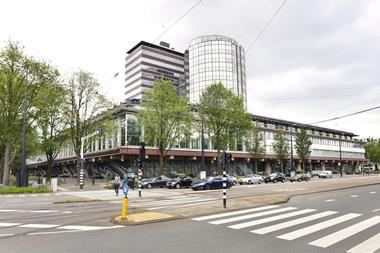The largest of Sweden’s AP national pension funds, AP7, is to change its name and take on more duties within the country’s first-pillar defined contribution premium pension system, according to official proposals released today.
In the report of the public investigation into the premium pension system, which was launched by the Minister of Social Affairs Ardalan Shekarabi at a press conference in Stockholm this morning, special investigator Mikael Westberg has set out proposals for the second phase of the system’s reform, which is due to be in place by the end of December 2023.
As expected, the investigation has proposed replacing the current open funds marketplace with a procured range of fund options, which will be overseen by a principal responsible for ensuring enough freedom of choice and controlling quality.
Funds are to be selected via a statutory procurement procedure, and the investigation proposes separate legislation is drawn up for this.
Under the plans set out in the 860-page report, entitled “A better premium pension system SOU 2019: 44”, AP7 - which currently manages the default option in the system - is to be given more tasks and change its name to the “Authority for the Premium Pension Fund Management”.
The main duties of this new agency, which will be independent of government, will be to manage the default option in the premium pension; the new procured funds marketplace; the asset management of traditional insurance and the premium pension choice architecture, according to the Ministry of Social Affairs.
Other tasks within the premium pension system will, as currently, be handled by the Swedish Pensions Agency, it said.
The new authority is to work towards liquidating the existing funds marketplace and replacing it with a procured version no later than December 31, 2023, the ministry said.
The report - which is now out for consultation - also sets out details of how the new procured funds marketplace will work.
The inquiry proposes procuring mutual funds and fund companies that are already permitted in the premium pension fund marketplace, including equity funds, mixed funds and fixed income funds that can focus on different industries and geographical areas.
It also proposes allowing special funds and the foreign equivalents of such funds to be procured for the marketplace, although there should be a requirement for liquidity purposes that they are available for redemption at least once a week, it said.
In the report, Westberg said the government would not be able to steer the range of funds available in the premium pension marketplace.
The design of the choice architecture would very much steer the design of the fund marketplace, including the number of funds, the report said.
However Westberg also said at the press conference that, given the amount of capital in the premium pension system, it was reasonable to suppose that the procured marketplace might contain between 150 and 200 funds.
Currently, the marketplace contains around 500 funds, with this number having been reduced considerably at the end of last year in stage 1 of the reform from more than 800, under which all fund providers were made to re-apply for inclusion.
Westberg’s report contains in-depth discussion of the level of investment risk that should exist in savings options available within the premium pension system, and the nature of the choice architecture that is to be designed and put in place to guide Swedes in deciding whether to put their savings in the default option or funds available on the marketplace - and at which risk level.












No comments yet